Abstract
1. The ability of histamine, acetylcholine, acetylcholine (ACh) and 5-hydroxytryptamine (5-HT) given I.V. and by aerosol to induce reflex bronchoconstriction and to activate lung irritant receptors has been studied in dogs anaesthetized with chloralose. 2. Histamine (four breaths of an aerosol from 0.0625%, 0.125% and 0.25% solutions and 5, 10 and 20 microgram kg-1 I.V.), 5-HT (four breaths of an aerosol from 0.5% or 1.0% solutions and 10, 20 and 40 microgram kg-1 I.V.) produced significant relex changes in RL (total lung resistance). The changes in RL produced by ACh (four breaths of an aerosol from 0.25%, 0.5% and 1.0% solutions, of 5, 10, 20 and 40 microgram kg-1 I.V.) were unaffected by vagal cooling. 3. The falls in Cdyn (dynamic compliance) produced by ACh given by aerosol or I.V. were unaffected by vagal cooling. The falls in Cdyn produced by histamine (10 microgram kg-1 and 40 microgram kg-1 I.V.) and 5-HT (four breaths of an aerosol generated from a 0.5% solution and 20 microgram kg-1 and 40 microgram kg-1 I.V.) were significantly reduced by vagal cooling. 4. Histamine, 5-HT and ACh given by aerosol and I.V. increased lung irritant receptor discharge. Irrespective of the route of administration, for a given change in RL histamine produced a greater increase in irritant receptor discharge than did ACh or 5-HT, which produced similar increases. 5. For a given change in RL, histamine, ACh and 5-HT were more effective in activating lung irritant receptors when given I.V. than by aerosol. 6. The mechanisms of irritant receptor activation by histamine, ACh and 5-HT and the relationship between irritant receptor discharge and reflex bronchoconstriction are discussed.
Full text
PDF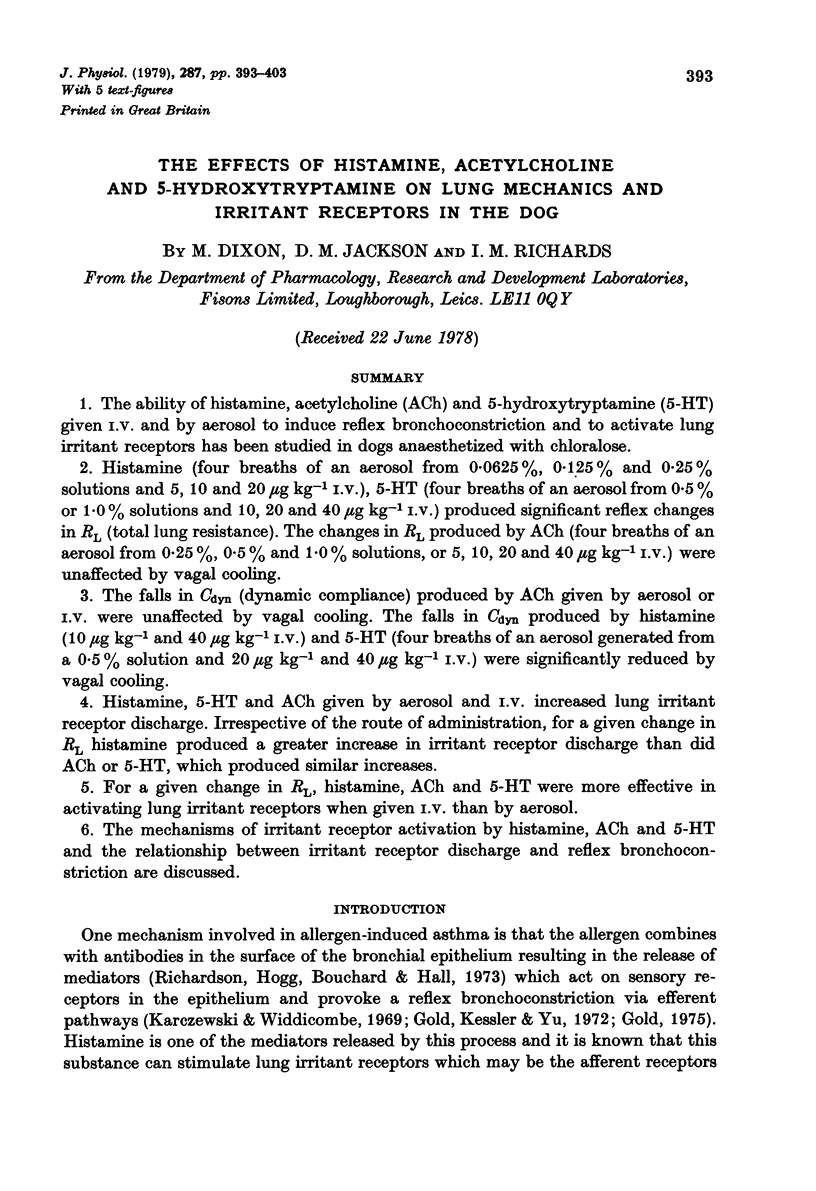
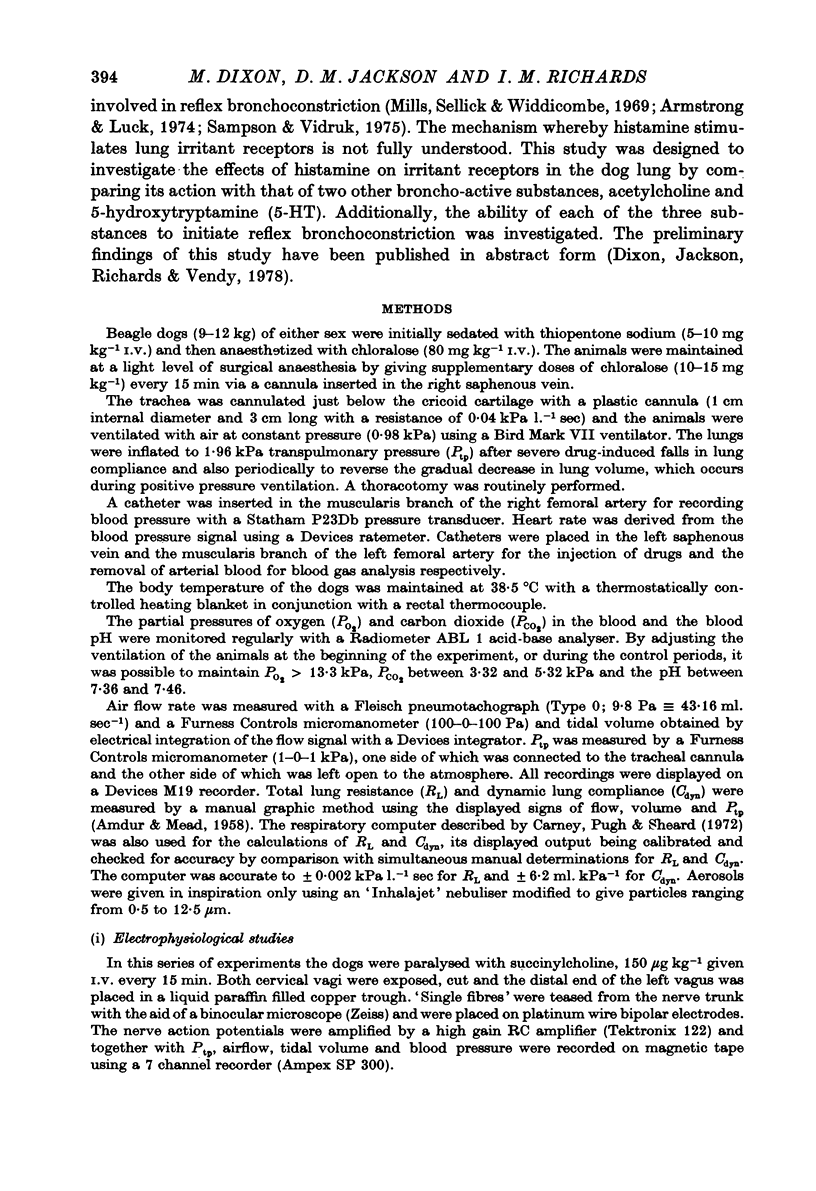
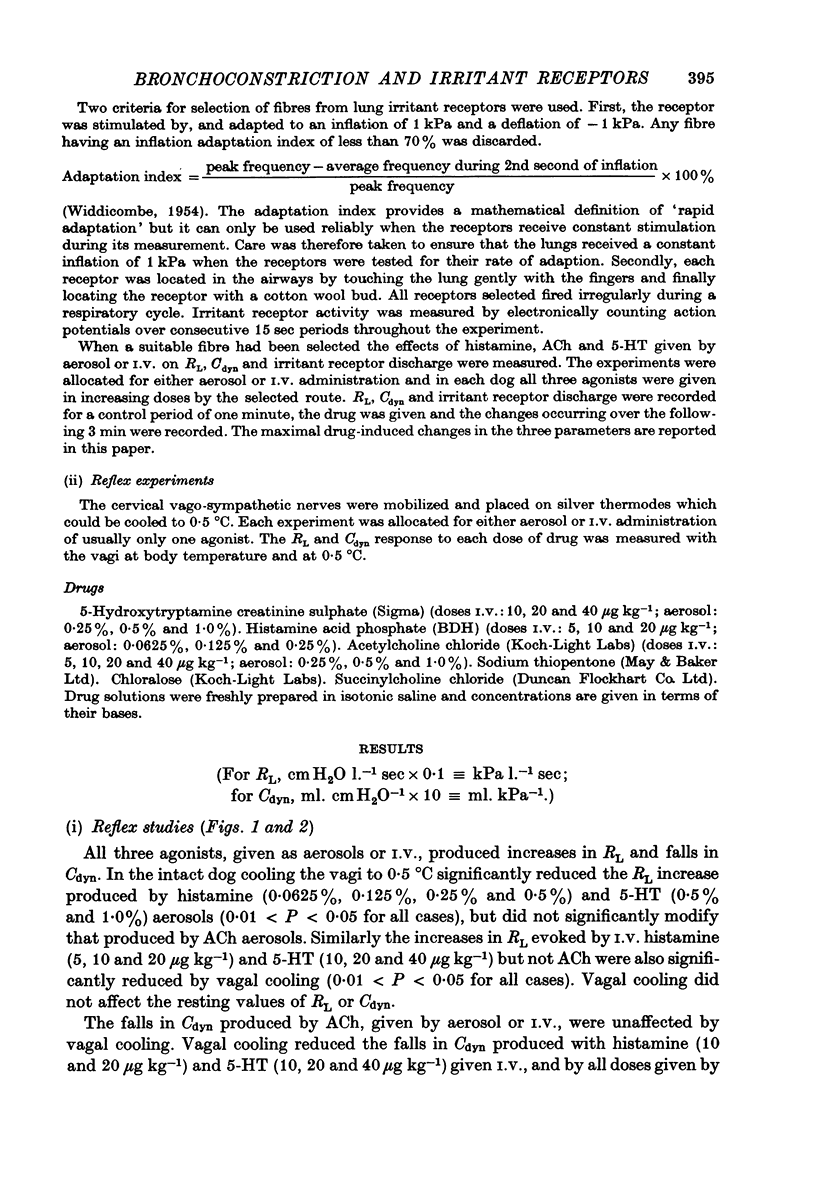
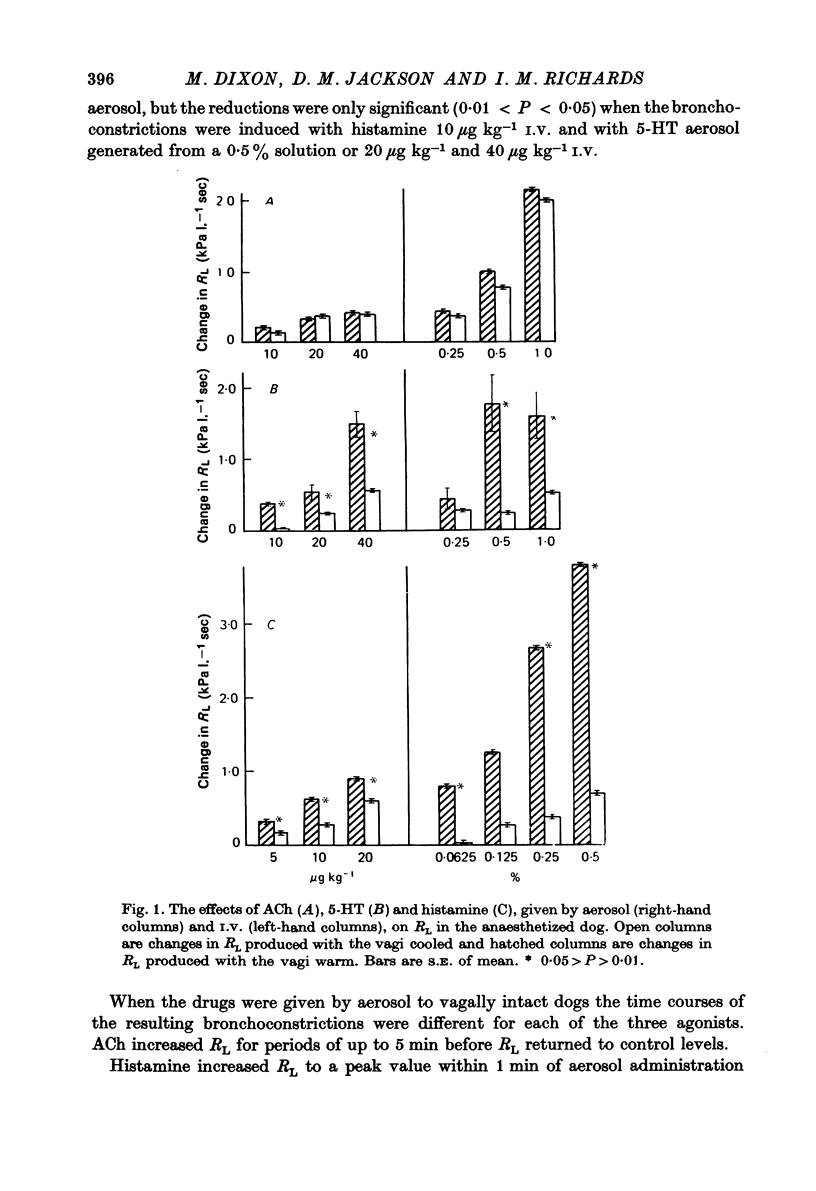
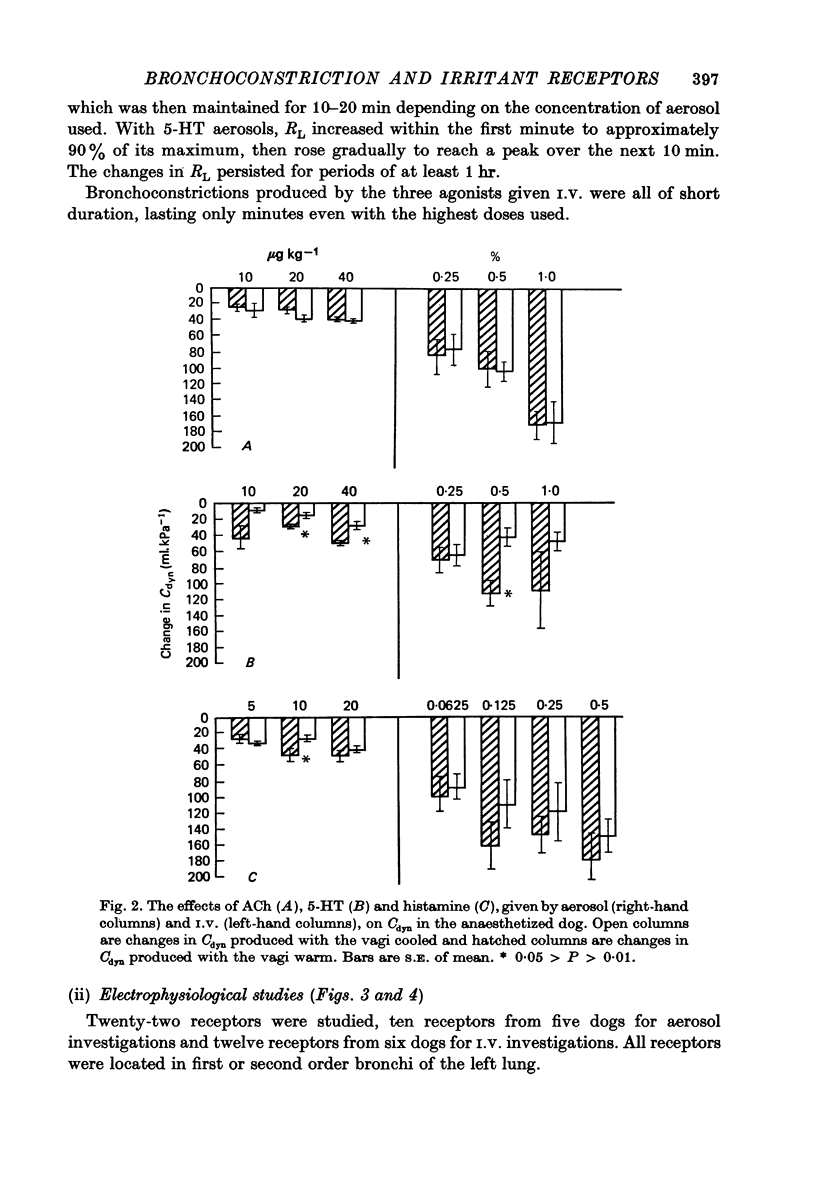
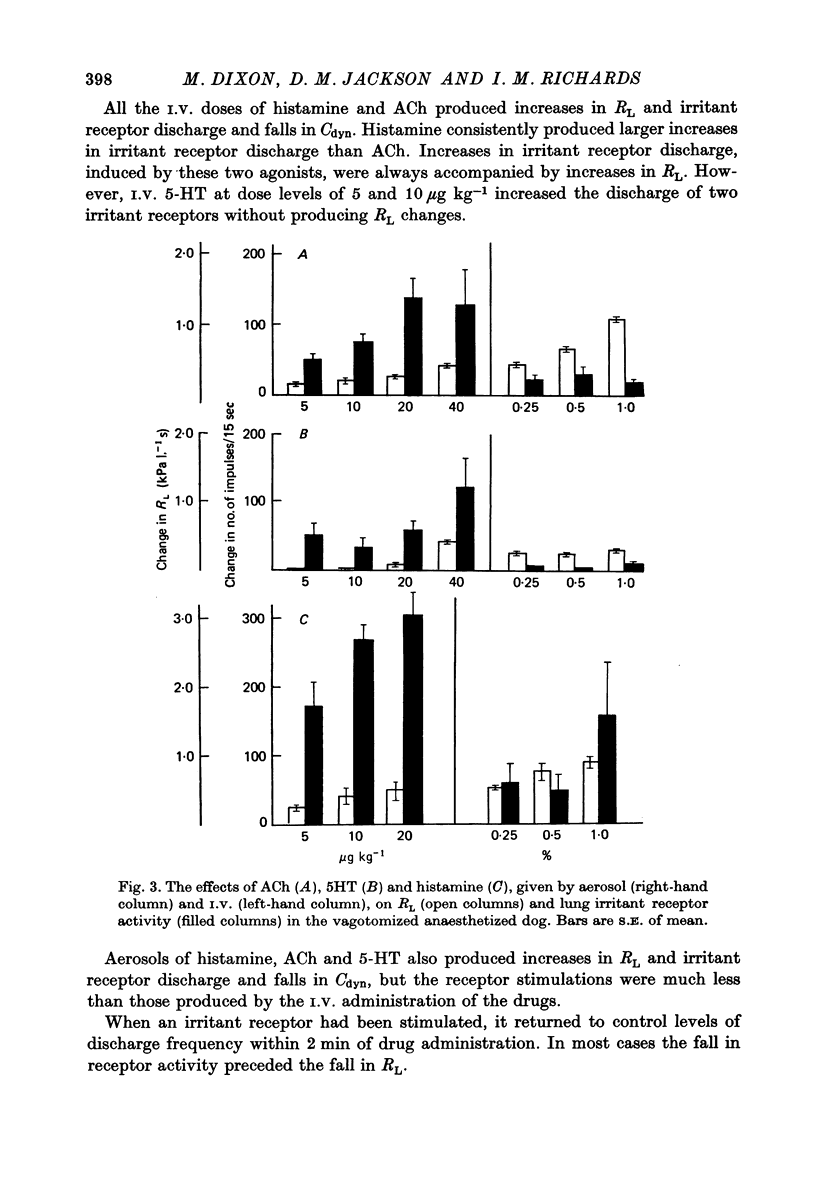
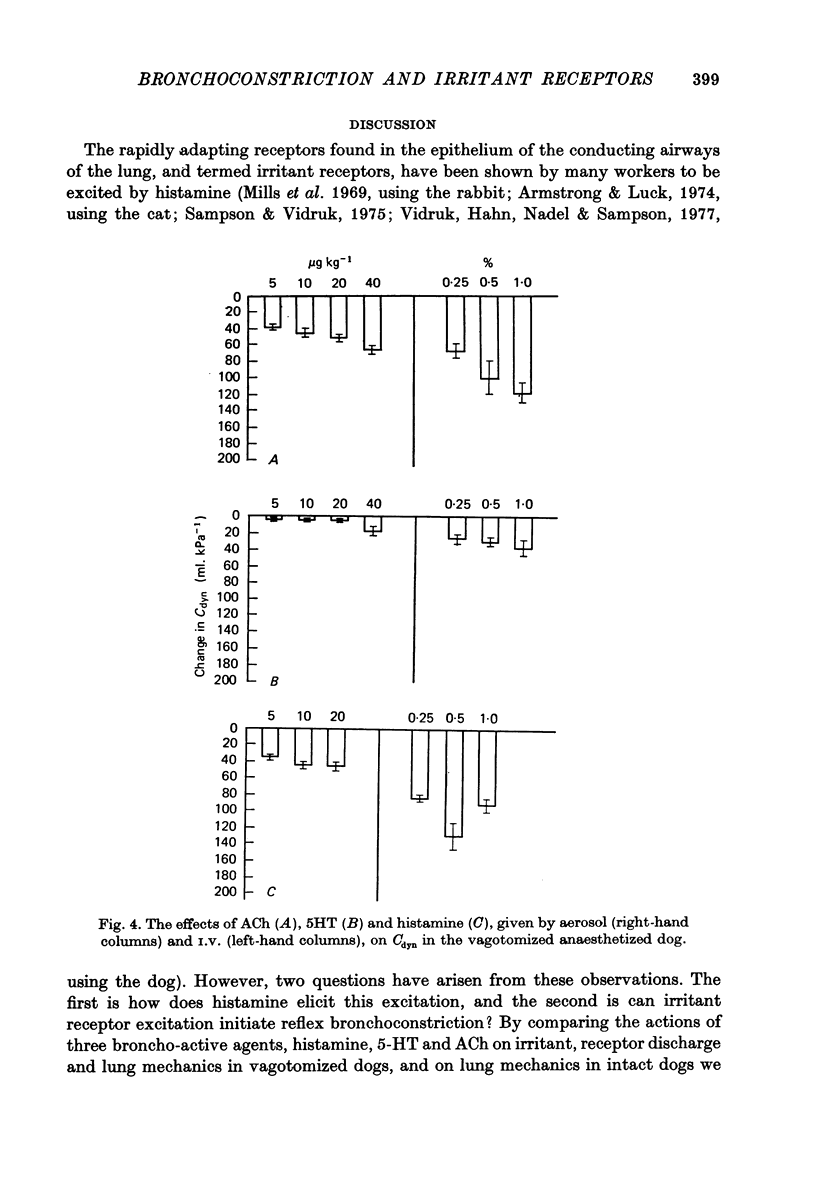
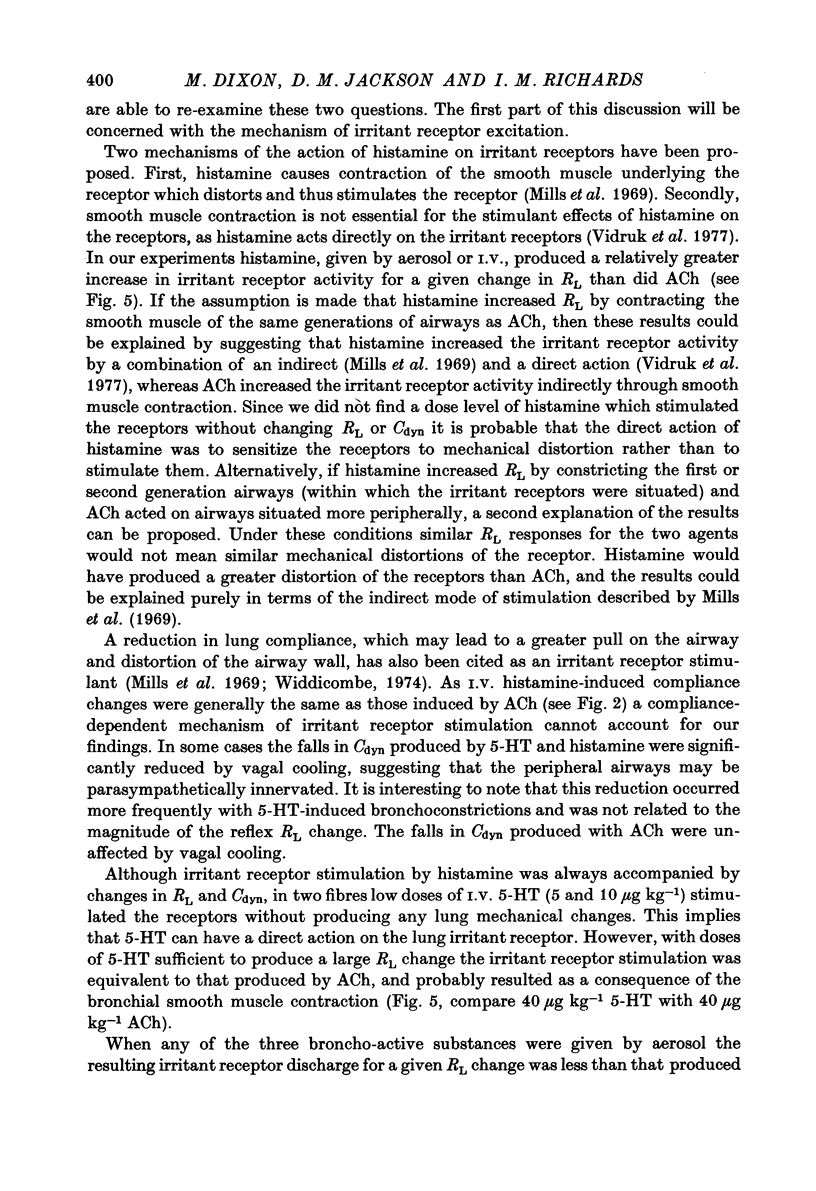
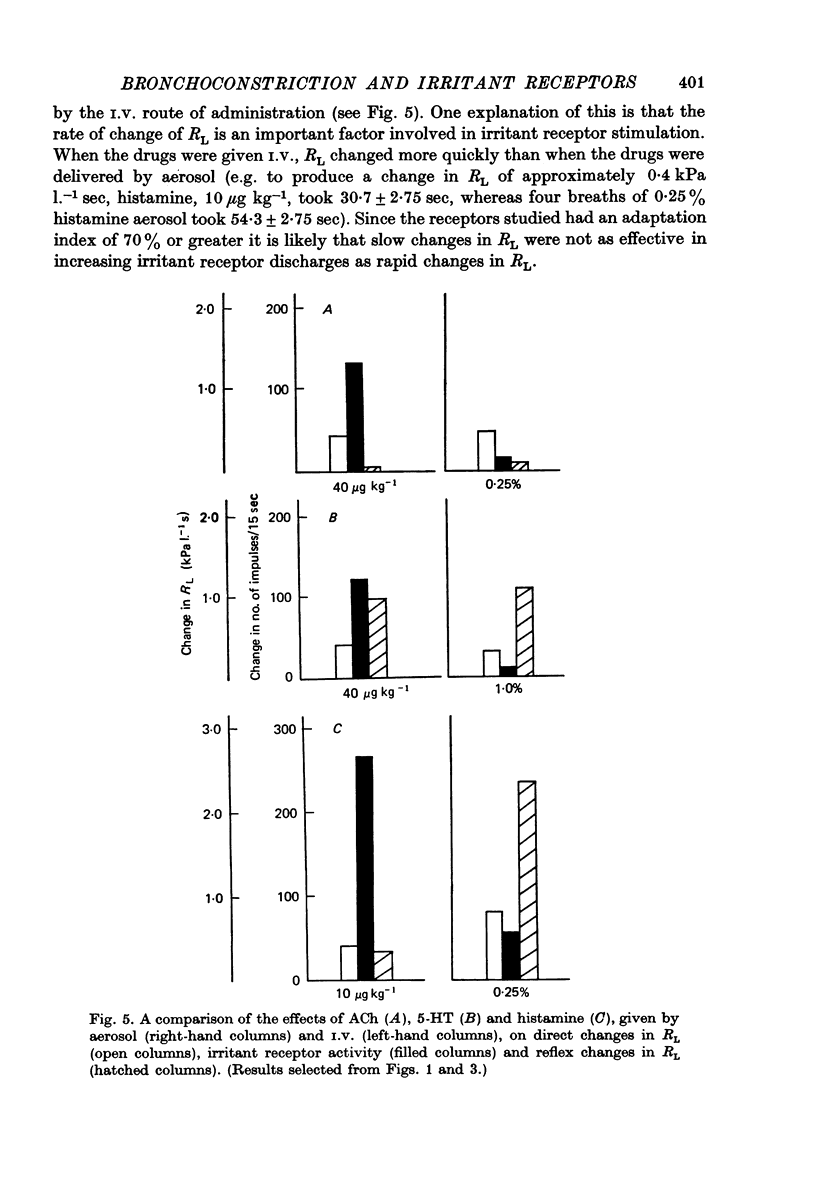
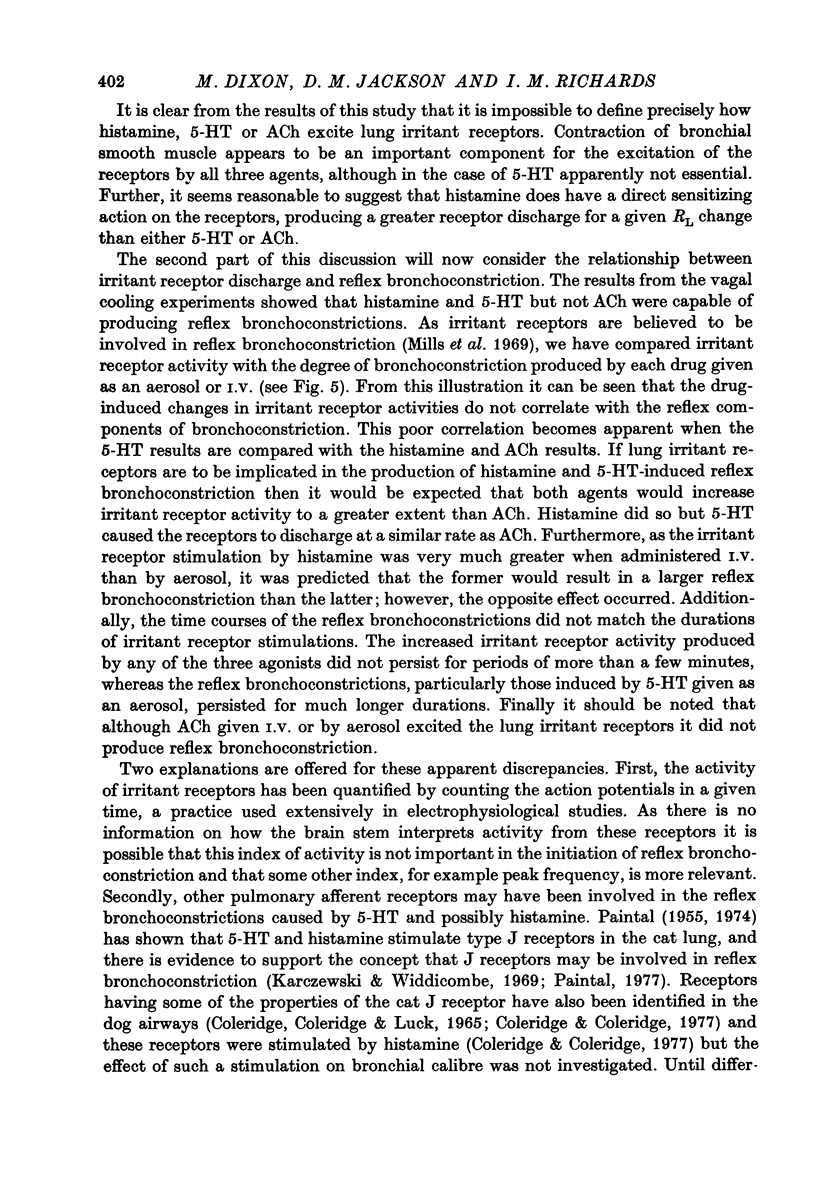
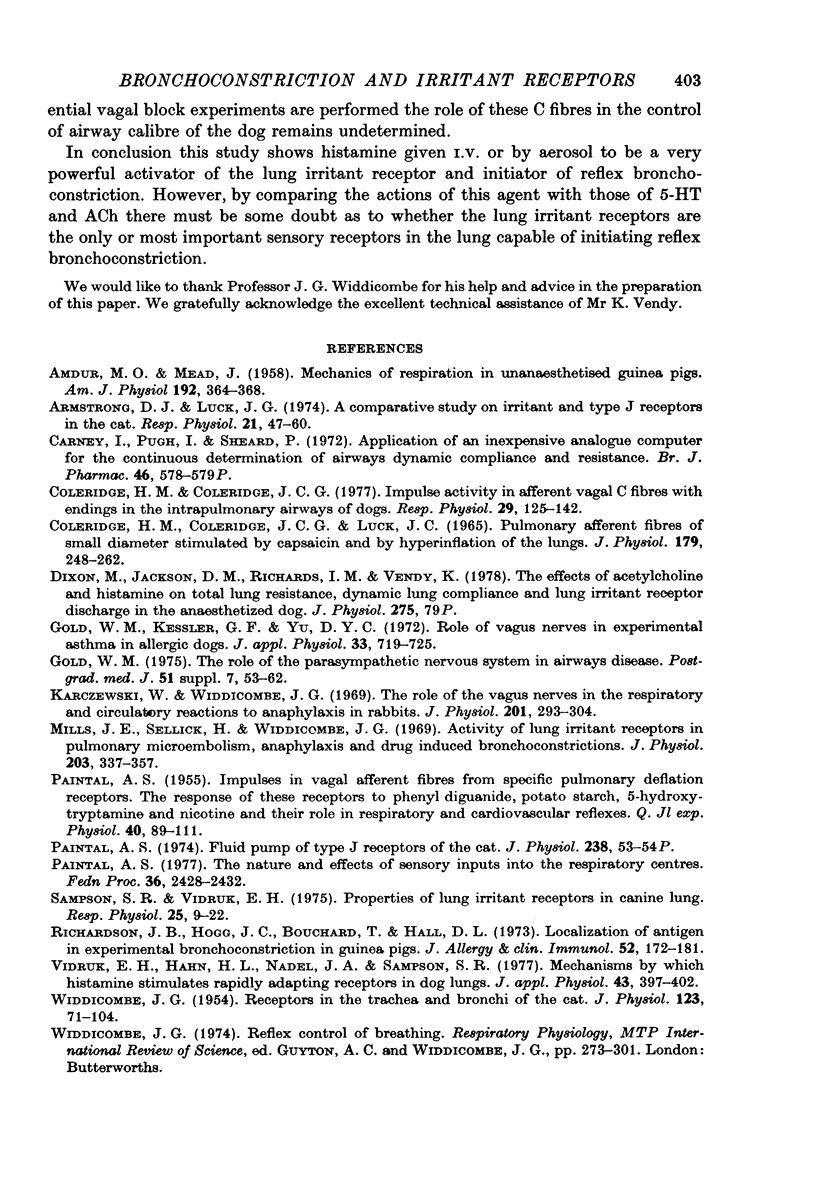
Selected References
These references are in PubMed. This may not be the complete list of references from this article.
- AMDUR M. O., MEAD J. Mechanics of respiration in unanesthetized guinea pigs. Am J Physiol. 1958 Feb;192(2):364–368. doi: 10.1152/ajplegacy.1958.192.2.364. [DOI] [PubMed] [Google Scholar]
- Armstrong D. J., Luck J. C. A comparative study of irritant and type J receptors in the cat. Respir Physiol. 1974 Jul;21(1):47–60. doi: 10.1016/0034-5687(74)90006-1. [DOI] [PubMed] [Google Scholar]
- Carney I., Pugh I., Sheard P. Application of an inexpensive analogue computer for the continuous determination of airways dynamic compliance and resistance. Br J Pharmacol. 1972 Nov;46(3):578P–579P. [PMC free article] [PubMed] [Google Scholar]
- Coleridge H. M., Coleridge J. C. Impulse activity in afferent vagal C-fibres with endings in the intrapulmonary airways of dogs. Respir Physiol. 1977 Apr;29(2):125–142. doi: 10.1016/0034-5687(77)90086-x. [DOI] [PubMed] [Google Scholar]
- Coleridge H. M., Coleridge J. C., Luck J. C. Pulmonary afferent fibres of small diameter stimulated by capsaicin and by hyperinflation of the lungs. J Physiol. 1965 Jul;179(2):248–262. doi: 10.1113/jphysiol.1965.sp007660. [DOI] [PMC free article] [PubMed] [Google Scholar]
- Dixon M., Jackson D. M., Richards I. M., Vendy K. The effects of acetylcholine and histamine on total lung resistance, dynamic lung compliance and lung irritant receptor discharge in the anaesthetized dog [proceedings]. J Physiol. 1978 Feb;275:79P–80P. [PubMed] [Google Scholar]
- Gold W. M., Kessler G. F., Yu D. Y. Role of vagus nerves in experimental asthma in allergic dogs. J Appl Physiol. 1972 Dec;33(6):719–725. doi: 10.1152/jappl.1972.33.6.719. [DOI] [PubMed] [Google Scholar]
- Gold W. M. The role of the parasymphathetic nervous system in airways disease. Postgrad Med J. 1975;51(7 Suppl):53–62. [PubMed] [Google Scholar]
- Karczewski W., Widdicombe J. G. The role of the vagus nerves in the respiratory and circulatory reactions to anaphylaxis in rabbits. J Physiol. 1969 Apr;201(2):293–304. doi: 10.1113/jphysiol.1969.sp008756. [DOI] [PMC free article] [PubMed] [Google Scholar]
- Mills J. E., Sellick H., Widdicombe J. G. Activity of lung irritant receptors in pulmonary microembolism, anaphylaxis and drug-induced bronchoconstrictions. J Physiol. 1969 Aug;203(2):337–357. doi: 10.1113/jphysiol.1969.sp008867. [DOI] [PMC free article] [PubMed] [Google Scholar]
- PAINTAL B. A. Impulses in vagal afferent fibres from specific pulmonary deflation receptors: the response of these receptors to phenyl diguanide, potato starch, 5-hydroxytryptamine and nicotine, and their rôle in respiratory and cardiovascular reflexes. Q J Exp Physiol Cogn Med Sci. 1955 Apr;40(2):89–111. doi: 10.1113/expphysiol.1955.sp001116. [DOI] [PubMed] [Google Scholar]
- Paintal A. S. Proceedings: Fluid pump of type J receptors of the cat. J Physiol. 1974 Apr;238(1):53P–54P. [PubMed] [Google Scholar]
- Paintal A. S. The nature and effects of sensory inputs into the respiratory centers. Fed Proc. 1977 Sep;36(10):2428–2432. [PubMed] [Google Scholar]
- Richardson J. B., Hogg J. C., Bouchard T., Hall D. L. Localization of antigen in experimental bronchoconstriction in guinea pigs. J Allergy Clin Immunol. 1973 Sep;52(3):172–181. doi: 10.1016/0091-6749(73)90034-1. [DOI] [PubMed] [Google Scholar]
- Sampson S. R., Vidruk E. H. Properties of 'irritant' receptors in canine lung. Respir Physiol. 1975 Oct;25(1):9–22. doi: 10.1016/0034-5687(75)90047-x. [DOI] [PubMed] [Google Scholar]
- Vidruk E. H., Hahn H. L., Nadel J. A., Sampson S. R. Mechanisms by which histamine stimulates rapidly adapting receptors in dog lungs. J Appl Physiol Respir Environ Exerc Physiol. 1977 Sep;43(3):397–402. doi: 10.1152/jappl.1977.43.3.397. [DOI] [PubMed] [Google Scholar]
- WIDDICOMBE J. G. Receptors in the trachea and bronchi of the cat. J Physiol. 1954 Jan;123(1):71–104. doi: 10.1113/jphysiol.1954.sp005034. [DOI] [PMC free article] [PubMed] [Google Scholar]


